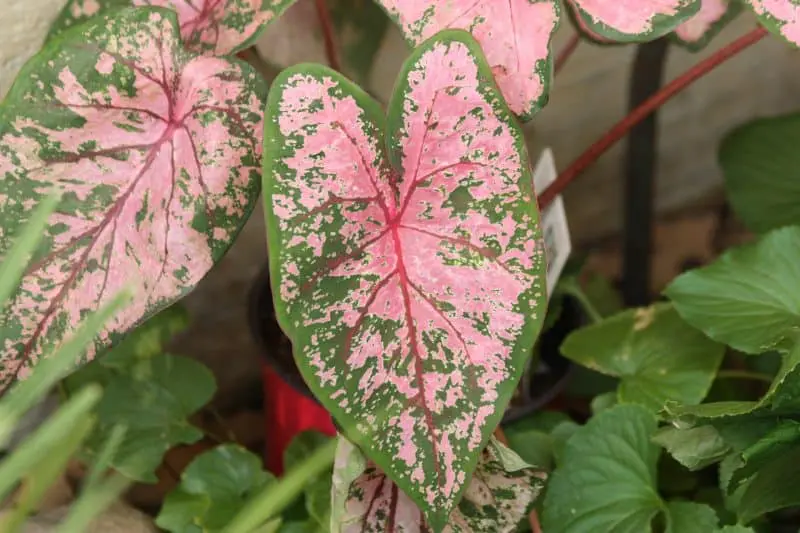
Caladiums can be beautiful additions to your home and garden, but they require a little extra care if you want them to thrive.
Caring for Caladiums Key Takeaways:
- Caring for Caladiums in Pots:
- Use a pot with drainage holes, filled with organic-rich, well-draining soil.
- Plant bulbs just above soil surface, place in filtered light, and keep soil moist but not soggy.
- Fertilize bi-weekly with diluted liquid fertilizer.
- In winter, move indoors to a bright spot, allowing a 5-month dormancy when foliage dies back.
In this blog post, we will discuss how to care for caladiums in pots so that you can enjoy their beauty all year long.
Caladiums Are Different
They are a bit different from most houseplants you may have grown.
- First of all, they are bulbs.
- They also need a rest period and will go dormant.
- They are only winter hardy in zone 9 and above.
- But they are often grown as annuals in colder zones
As we come to the end of summer, many people are taking their caladium plants out of the ground and potting them up.
But even though bringing them indoors can extend their season they will still die back after 6 or 7 months.
This has nothing to do with seasons. These plants naturally go dormant for a resting period.
So if your plant looks like it’s dying it doesn’t mean you did something wrong.
How To Care For Caladiums In Pots
Even if you grow these plants indoors they will eventually go dormant but they will come back after about a 5-month resting period.
If you grow them outside you will want to grow them in pots so you can bring them indoors as the weather cools.
What Are Caladiums And Why Are They A Popular Summer Plant?
Caladiums are a type of tropical plant that is native to South and Central America.
They have been cultivated for centuries and were first brought to Europe in the late 1700s.
Caladiums became a popular houseplant in the Victorian era, and they remain popular to this day.
Caladiums are prized for their beautiful, brightly-colored leaves. They come in a wide range of colors, including pink, red, white, and green.
Caladiums are typically grown as annuals in temperate climates, as they cannot tolerate frost.
In colder regions, caladiums are often grown as houseplants or in pots so that they can be brought indoors during the winter.
They are also popular for indoor container gardening. Caladiums require warm temperatures and plenty of moisture to thrive.
Outdoors Caladiums should be planted in fertile, well-drained soil and fertilized regularly. With proper care, caladiums will provide color all summer long.
Growing Caladiums In Containers
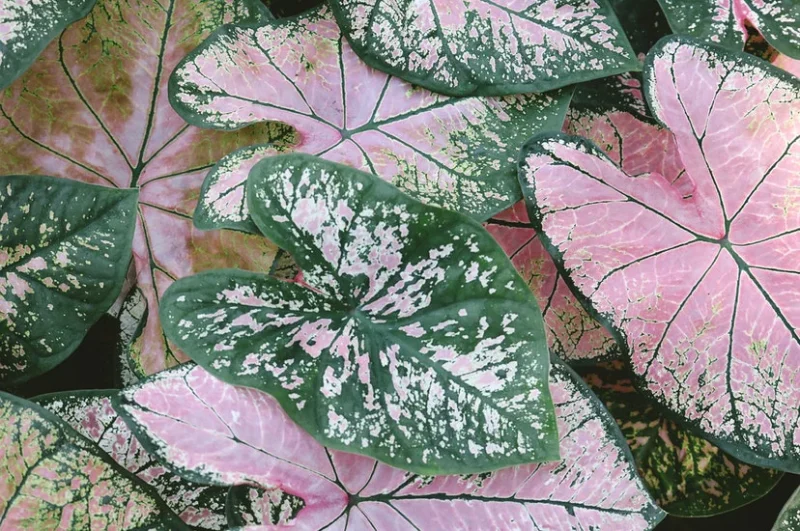
Caladiums are a popular choice for container gardening because they are easy to care for and add a splash of color to any setting.
When potting caladiums, choose a container that is at least 12 inches wide and has drainage holes in the bottom.
Fill the pot with a quality potting mix, and plant the caladium bulbs so that the tops are just poking above the soil surface.
Water the plants thoroughly, and then place them in a location that receives filtered light.
Caladiums require moist soil, so water the plants on a weekly basis or as needed to keep the soil moist but not soggy.
Caladiums are tropical plants and they need warm temperatures of 65-80°. They don’t like cold drafts either.
With proper care, caladiums will thrive in containers and provide months of enjoyment.
How to prepare caladiums for potting
If you live in an area with a warm climate, you can grow caladiums in your garden.
However, if you live in a colder region, you can still enjoy these beautiful plants by potting them and keeping them indoors.
Here are some tips for preparing caladiums for potting:
First, select a pot that is large enough to accommodate the roots of your plant. Be sure to choose a pot with drainage holes to prevent the roots from sitting in water.
Next, fill the pot with a high-quality potting mix. You can find potting mix at your local garden center or online.
Before planting your caladium bulbs, soak them in water for several hours. This will help to ensure that the plant gets off to a good start.
Finally, plant your caladium in the pot and water it generously. Be sure to keep the soil moist but not soggy.
The Best Type 0f Potting Soil For Caladiums
If you’re looking for the best potting soil for caladiums, you’ll want to find a mix that is high in organic matter and well draining.
Caladiums are native to tropical regions, so they prefer soil that is moist and well-drained.
A good potting mix will also contain plenty of peat moss or coco coir, which will help to hold moisture without making the mix too soggy.
In addition, you’ll want to add some perlite or vermiculite to the mix, which will help to aerate the soil and improve drainage.
How To Water And Fertilize Potted Caladiums
While they are relatively easy to care for, they do need to be watered and fertilized regularly in order to stay healthy.
Here are some tips on how to do so:
Watering: Caladiums prefer to grow in moist, but not soggy, soil. Water your plants regularly, but allow the top few inches of soil to dry out between waterings.
If your potting mix feels dry to the touch, it is time to water. You can put them in a sink or bathtub and let the water run over the pot until it drains out the bottom.
Fertilizing: Feed your caladiums every two weeks with a liquid fertilizer.
Make sure to dilute it according to the instructions, as too much fertilizer can burn the roots.
Common Problems With Potted Caladiums And How To Solve Them
Potted caladiums are becoming increasingly popular as houseplants, but they can sometimes be a bit finicky.
Although potted caladiums are a popular addition to many homes and offices, they can occasionally experience problems.
Here are some common problems and tips on how to solve them:
Potted caladiums are generally trouble-free, but there are a few common problems that you may encounter.
One is leaf spot, which is caused by a fungal disease. Leaf spot appears as small, dark spots on the leaves of your plant.
The best way to prevent leaf spots is to water early in the day so that the leaves have time to dry before nightfall.
If leaf spot does occur, remove any affected leaves and dispose of them in the trash.
Another common issue is that potted caladiums prefer high humidity and tend to dry out quickly.
This can be solved by placing the pot in a saucer of water and making sure to mist the leaves regularly.
Leaf drop is another common issue and occurs when the leaves turn yellow and fall off the plant.
This can be caused by several factors, including too much or too little water, low humidity, or a lack of nutrients.
Another problem that potted caladiums may experience is root rot, which is caused by overwatering and results in the roots turning mushy and brown.
You will want to trim off damaged roots and repot in fresh soil.
If your plant is suffering from root rot, it’s important to reduce watering and increase drainage.
Finally, caladiums may also experience pests, such as aphids, thrips, and mealybugs.
These pests can be controlled with regular applications of insecticidal soap or neem oil.
Tips For Overwintering Potted Caladiums
If you’re like many gardeners, you look forward to the bright blooms of caladiums each summer.
But did you know that with a little care, you can enjoy these beautiful plants year-round?
Here are some tips for overwintering potted caladiums:
First, give your plants a good final watering before bringing them indoors for the winter.
This will help them to stay hydrated during the colder months. Next, place your pots in a location near a window with bright indirect light.
If possible, rotate the pots every few days so that all sides of the plant get an equal amount of light.
Lastly, make sure to keep an eye on the soil moisture levels and water as needed.
Even if you do everything right your plants will eventually start to die back.
Let them dry back and then place the pot in a warm dark area to rest for about 5 months.
You also can unpot them and store the bulbs in a breathable bag if you prefer.
Some people just throw them away at this point and just buy new bulbs.
How To Enjoy Caladiums Year Round Indoors
If you want continuous foliage you can start several pots of Caladium indoors a few months apart.
That way some will always be starting and some will be finishing up. Simply rotate your plants and you can enjoy Caladiums year round.
Where To Find Caladium Bulbs For Planting Next Year?
For those who love gardening, fall is the time to start thinking about next year’s crop.
One of the most popular flowers for adding color to the garden is the caladium.
These beautiful plants come in a variety of colors and patterns, and they are relatively easy to care for.
Caladium bulbs are typically available for purchase in the fall, so now is the ideal time to start planning for next year’s garden.
They can be found at most nurseries and garden centers, as well as online.
Buying Caladium Plants
You can save time and start enjoying your Caladiums sooner by buying them as live plants instead of bulbs.
When they do die back be sure to harvest the bulbs for future plantings.
They will need to rest for about 5 months before they are ready to grow again.
How To Prepare Caladiums For Potting
Caladiums are typically sold as bulbs or potted foliage plants.
If you are buying bulbs, look for ones that are plump and firm.
Avoid any that are soft, mushy, or have any signs of rot.
Caladium bulbs can be stored for several weeks before planting, so you may want to purchase them in advance if you live in a colder climate.
I think buying Caladiums that are already potted up and growing is more certain and you can start enjoying them immediately.
However, buying Caladium bulbs is much cheaper and if you want an outdoor bed of them it will be much cheaper.
Caladiums FAQs
Caladiums, with their vibrant foliage, are a delightful addition to any indoor or outdoor garden setting.
Although they are relatively easy to maintain, having a grasp of their basic care needs significantly enhances their growth and overall health.
Whether you are a seasoned gardener or a newbie, certain questions regarding caladium care are bound to arise. Let’s address some of the common queries associated with caring for caladiums.
Q. When is the best time to pot caladium bulbs?
A. The best time to pot caladium bulbs is in the spring when temperatures are consistently above 60°F, as they are tropical plants that prefer warm conditions.
Q. How often should I water my potted caladiums?
A. Caladiums prefer moist soil. It’s advisable to water them once the top few inches of soil feel dry to the touch. Over-watering or letting them sit in water can lead to root rot.
Q. Do caladiums need sunlight?
A. Caladiums thrive in filtered or indirect sunlight. Too much direct sunlight can cause leaf burn, while too little light can lead to leggy growth and less vibrant foliage.
Q. How do I overwinter my caladiums?
A. Before the first frost, bring your potted caladiums indoors and place them in a well-lit area with indirect sunlight.
As foliage dies back, allow them to go dormant by reducing watering and placing them in a warm, dark area for about 5 months before resuming regular care.
How To Care For Caladiums In Pots Final Thoughts
Caladiums are a beautiful addition to any garden, and with a little care, they can be enjoyed year-round.
While they are a bit different to care for their great looks make them worth the effort.
By following the tips in this article, you can ensure that your caladiums thrive indoors and out.
So don’t wait – get started planning your caladium garden today!
Caladiums – Wisconsin Horticulture





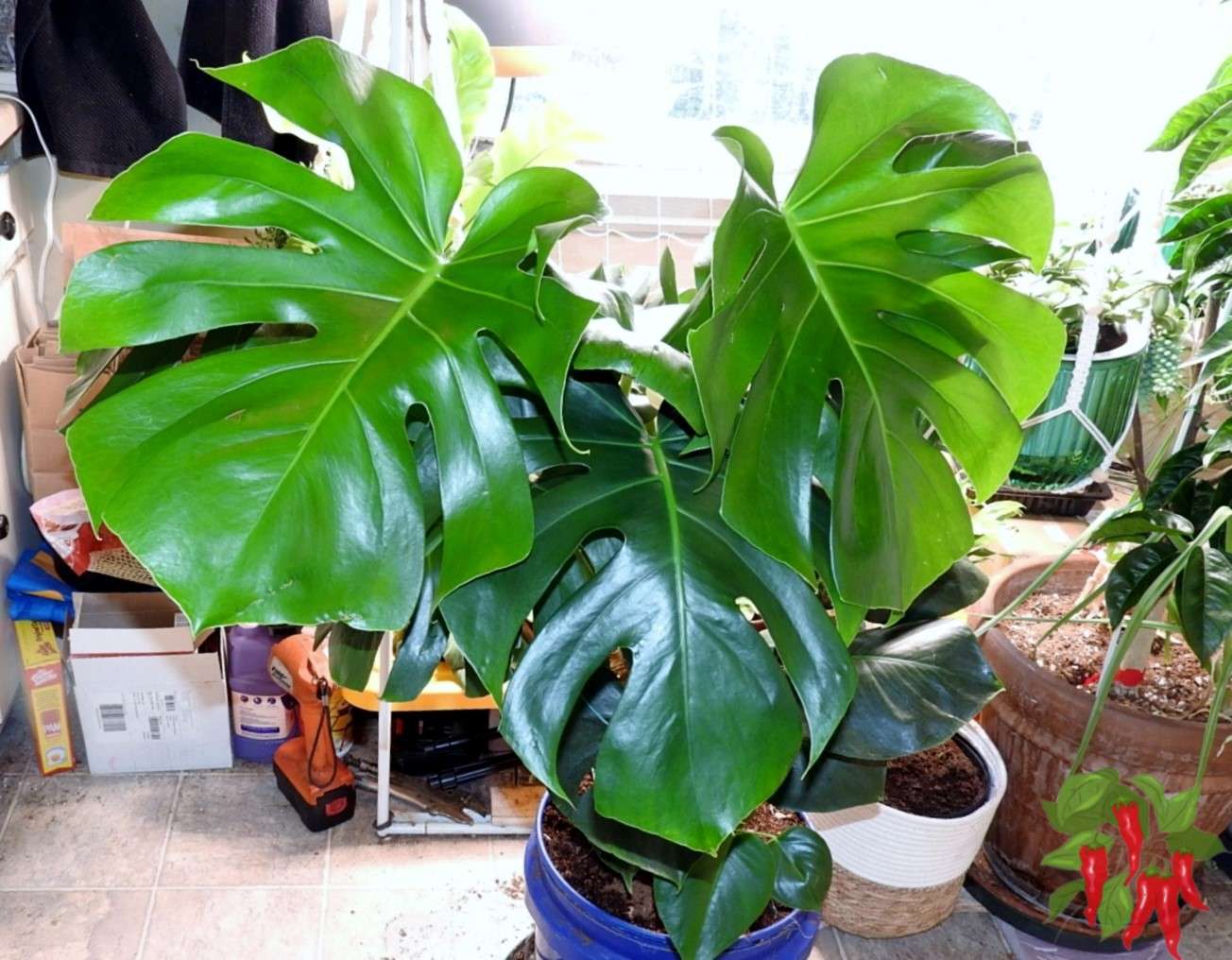
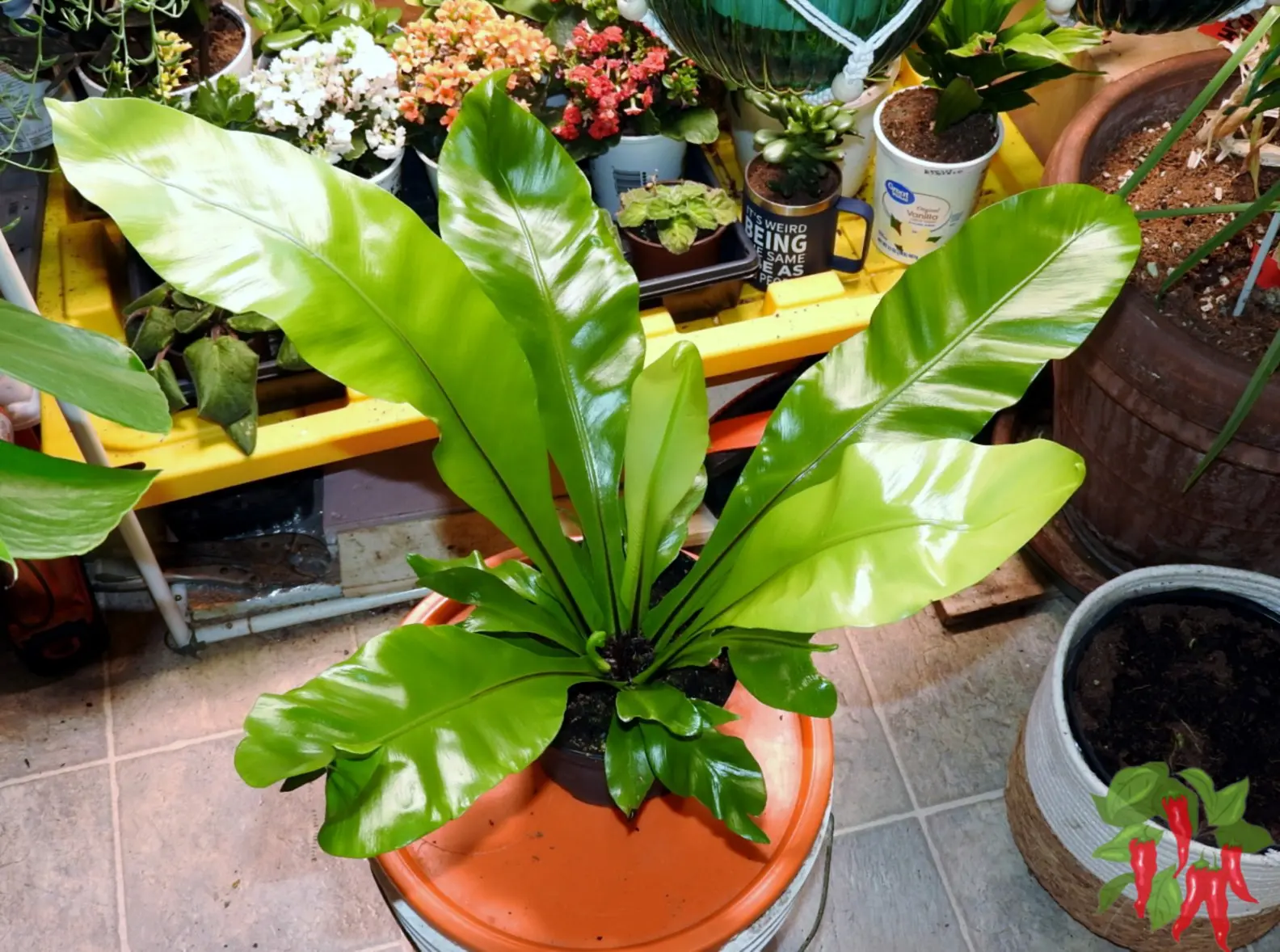
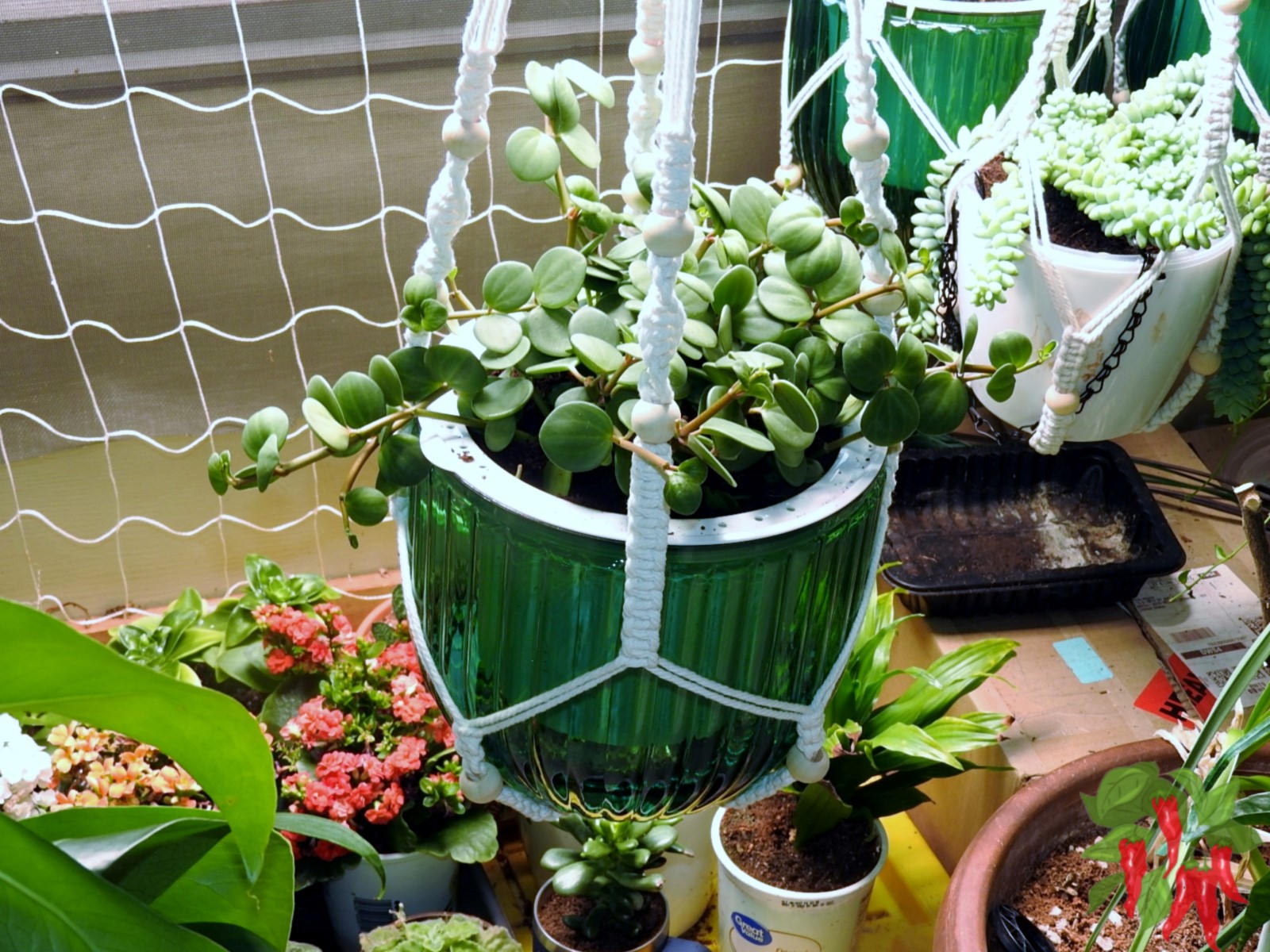
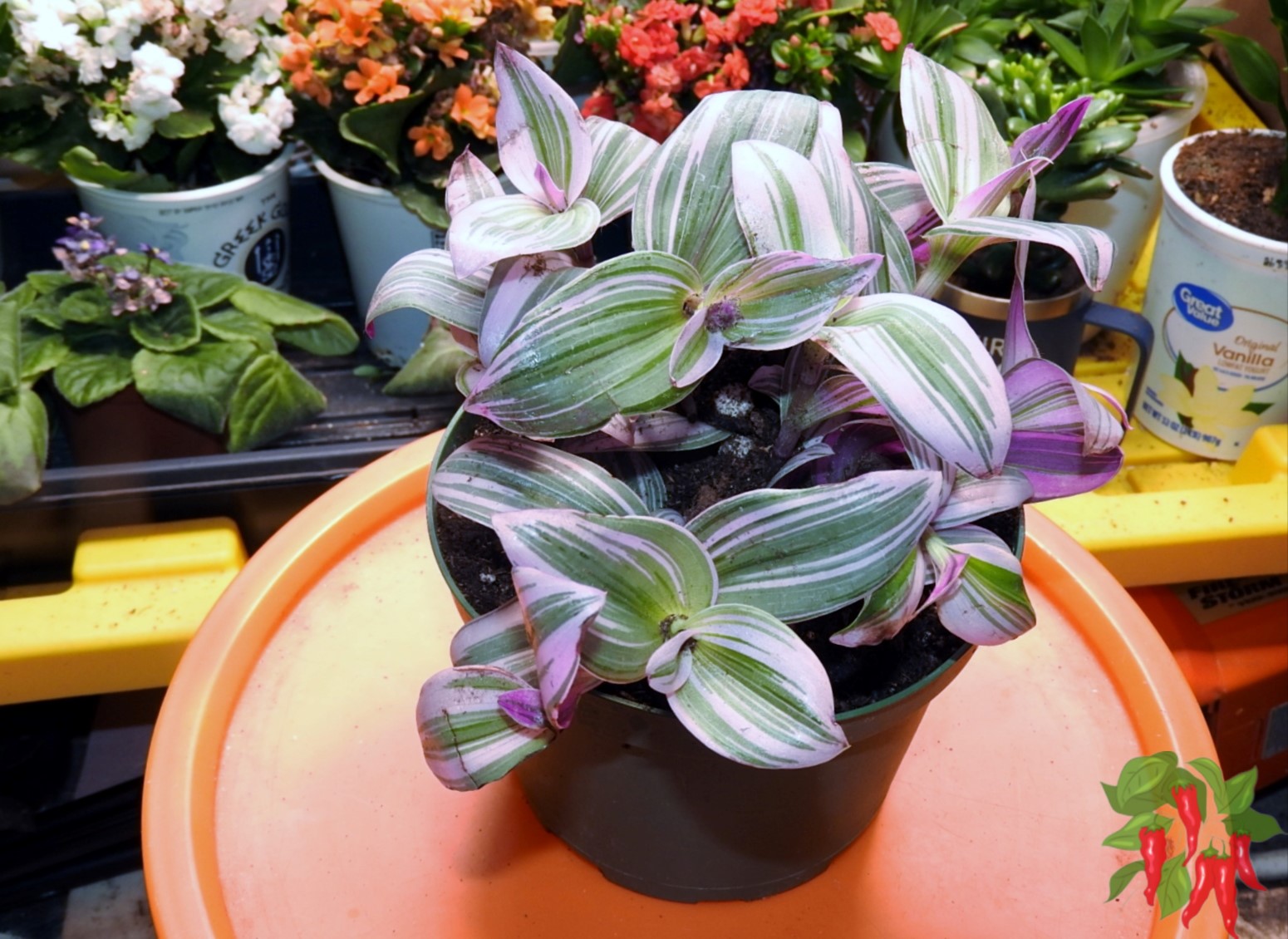
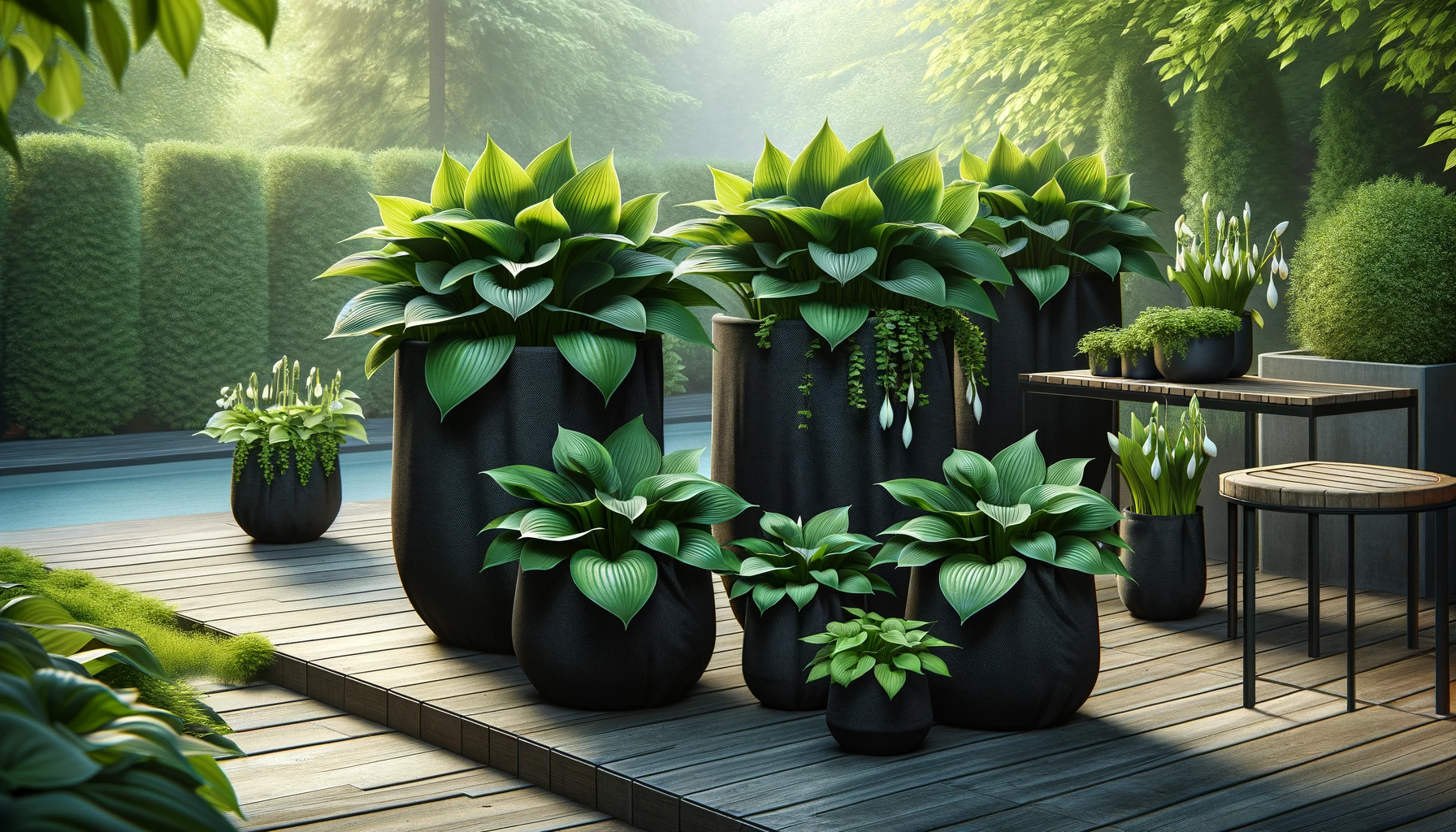
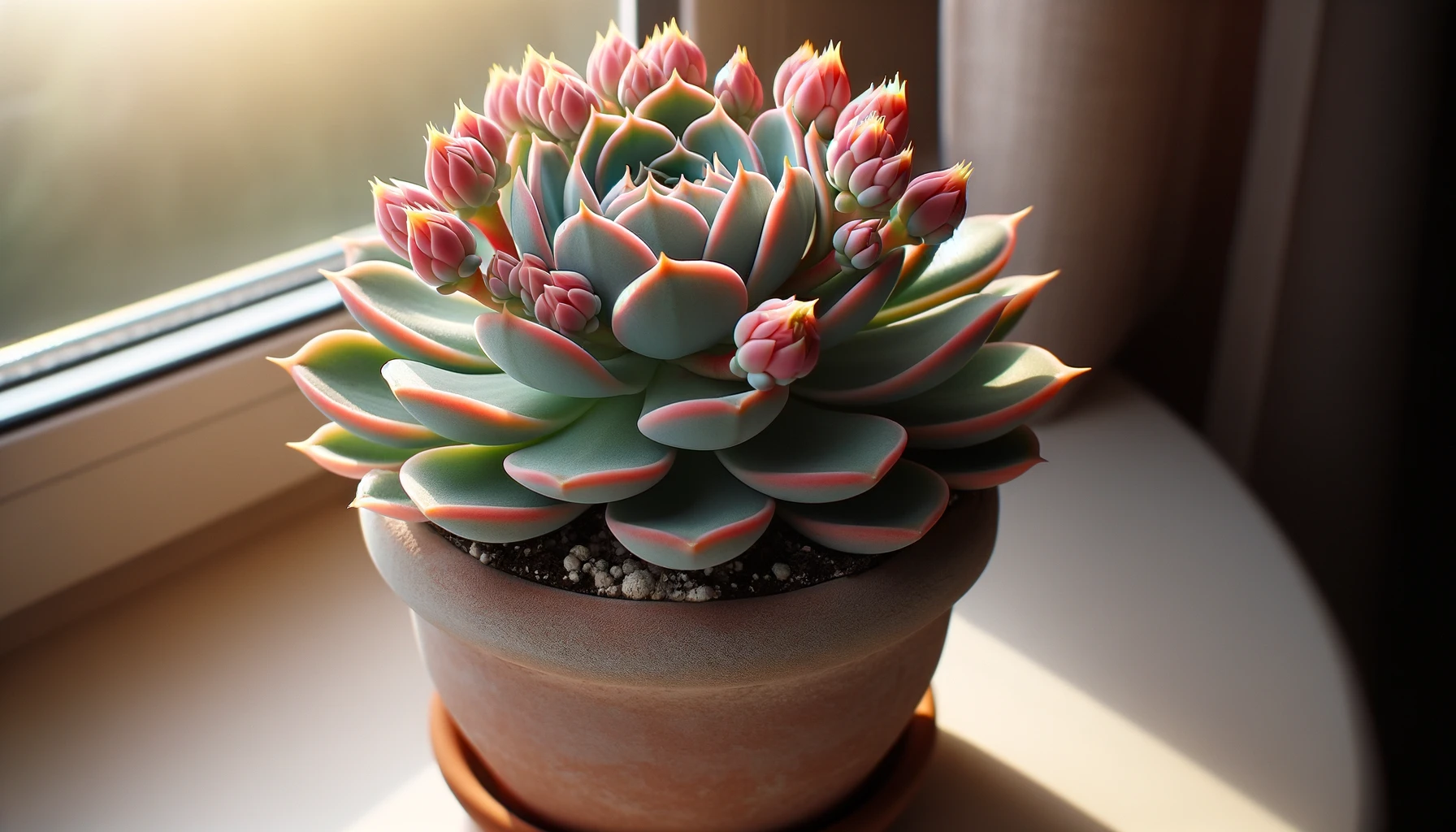
 Steve S. is the creator of
Steve S. is the creator of